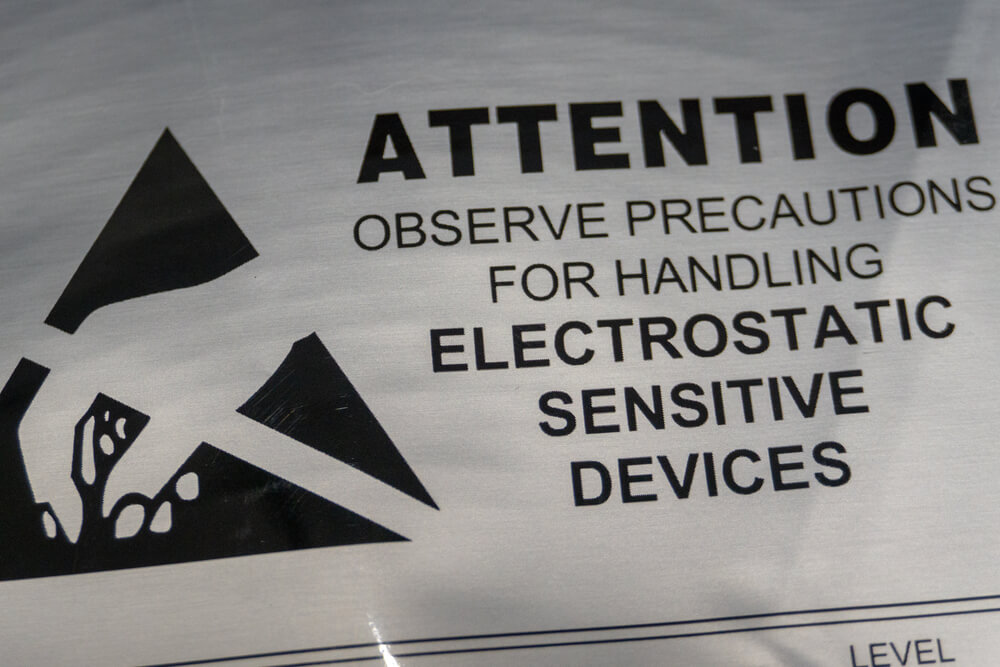8 ESD Packaging Materials and How They Work

Electrostatic discharge is the sudden exchange of electrons between two items. People commonly experience it as a minor static shock. That seemingly harmless shock can cause serious damage to sensitive electronics, including computer chips, control panels, and medical devices. Using ESD packaging materials is a cost-effective way to reduce the risk of damage from static electricity.
What Are ESD-Compliant Packaging Materials?
ESD-compliant packaging materials are those that are designed specifically to reduce the risk of damage from static electricity during shipping. Types of ESD Packaging materials include foil bags, plastic trays, and plastic wraps.
8 ESD Packaging Materials That Protect Sensitive Electronics
There are several different ESD packaging options to choose from, including:
- Aluminum: Some packaging materials use highly conductive aluminum film as a shielding layer
- Anti-Static PVC: This versatile option resists grease, heat, and impacts
- Conductive ABS: Combines PVC and ABS for a strong and durable shielding option
- Conductive Styrene: A styrene blend containing black carbon to dissipate static charge
- ESD Polycarbonate: A polycarbonate thermoforming material coated with a thin metal layer that prevents static buildup
- HDPE Black Conductive: Added carbon prevents the release of static with proper grounding
- HDPE Blue Anti-Static: Special additives help this durable and chemical-resistant material resist static
- PETG Anti-Static: Transparent, flexible, and easily recycled, this form of PETG is treated to reduce static accumulation
- RPET ESD: A recycled plastic that helps stop static electricity. It’s eco-friendly and protects electronic parts from damage caused by static.
Because proper packaging helps you overcome electronics supply chain issues, such as those caused by items damaged in transit, you should understand how each material works before selecting one.
How Do ESD Packaging Materials Work?

ESD packaging works through three main processes. Although they all protect package contents from electrical charges, each one is different. You should choose the material that offers the most suitable protection for your items.
Anti-Static
Some materials, such as polyethylene, provide basic protection by reducing the amount of static that accumulates. Using ESD packaging components made from anti-static plastics, bubble wrap, or plastic stretch film is an excellent way to take advantage of this property.
Anti-static materials are often used as a base layer along with other protective measures. However, they may offer sufficient protection for some electronics and small parts.
Dissipation
Other materials allow the static charge to accumulate, but they release it slowly in small, controlled amounts. These dissipative materials reduce the chance of a sudden voltage spike causing damage to products during shipping. Common uses for ESD packaging that dissipate static electric charges include shipping more sensitive electronics, computer chips, and control panels.
Shielding
As the name implies, these materials provide a physical shield that protects whatever is inside. These highly conductive materials absorb static electricity similar to how a Faraday cage works.
You can accomplish shielding by incorporating conductive materials into packaging designs. Metal foils and bags are common examples of shielding ESD packaging.
Explore Custom ESD Packaging Materials
At Ready-Made Plastic Trays, we use a variety of ESD packaging materials to create plastic material handling trays for automotive, electronics, aviation, and manufacturing industries. Our team can create custom trays to meet your specific product handling and shipping requirements. Request a sample today.

